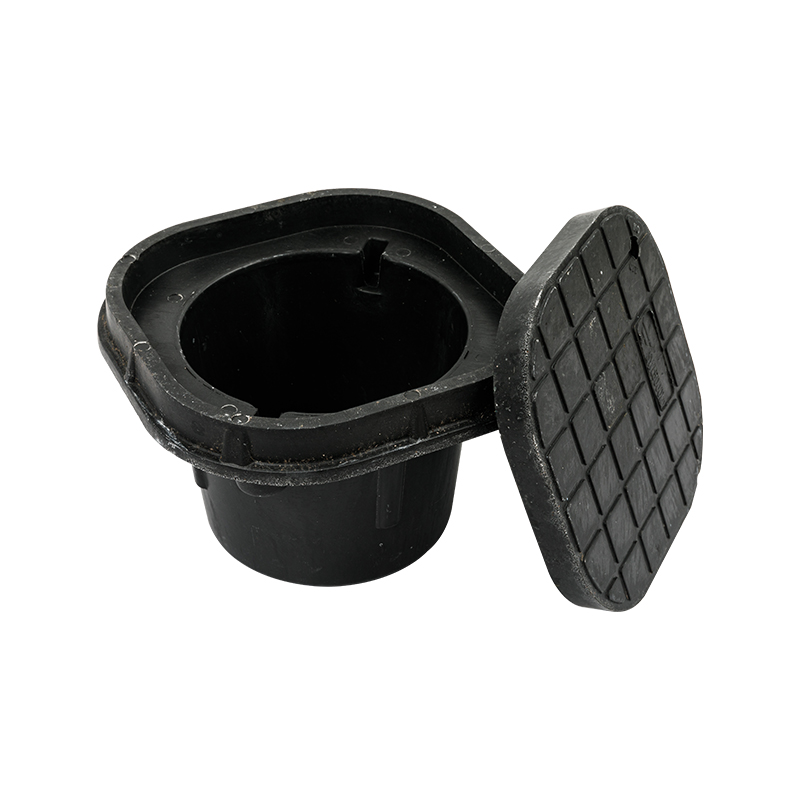
Don't Skimp on Safety: Why the Grounding Inspection Pit Matters
Grounding is an essential component of any electrical system, providing a safe path for electricity to flow to the ground in case of a fault. Grounding systems must be regularly inspected to ensure their integrity, and one crucial element of this inspection is the grounding inspection pit. This article will explain why the grounding inspection pit matters and why it should not be skimped on.
Firstly, it is crucial to understand what the grounding inspection pit is and what it does. A grounding inspection pit is a small, covered pit located at the base of a grounding electrode. It serves as an access point for testing and inspecting the grounding electrode, which is the component of the grounding system that makes physical contact with the earth. The grounding electrode is typically a metal rod, plate, or wire buried in the ground, and it provides a low-resistance path for electricity to flow to the earth in case of a fault.
The grounding inspection pit allows technicians to visually inspect the grounding electrode for any signs of corrosion, damage, or improper installation. Additionally, it provides a location to measure the resistance of the grounding electrode, which is a critical parameter for ensuring proper grounding performance. Without access to the grounding inspection pit, it would be impossible to perform these critical tests and inspections, which could compromise the safety and reliability of the grounding system.
Secondly, there are several reasons why it is essential not to skimp on the grounding inspection pit. The first and most obvious reason is safety. A faulty or inadequate grounding system can lead to serious electrical hazards, such as electric shock, fires, and explosions. By regularly inspecting the grounding electrode and ensuring its integrity, technicians can minimize these risks and ensure the safety of the electrical system.
Another reason not to skimp on the grounding inspection pit is that it can save money in the long run. Regular inspections and maintenance can help identify small issues before they become major problems that require expensive repairs or replacements. By investing in proper grounding inspections and maintenance, businesses and organizations can avoid costly downtime and lost productivity.
Finally, regulatory compliance is another reason why the grounding inspection pit matters. Electrical systems must meet strict safety and performance standards set by regulatory bodies such as the National Electrical Code (NEC) and the Occupational Safety and Health Administration (OSHA). Failure to comply with these regulations can result in fines, legal liability, and reputational damage. Proper grounding inspections, including inspections of the grounding inspection pit, can help ensure compliance with these regulations and protect organizations from these risks.
In conclusion, the grounding inspection pit is a critical component of any grounding system, and it should not be skimped on. Regular inspections and maintenance of the grounding electrode, including the grounding inspection pit, are essential for ensuring the safety, reliability, and regulatory compliance of electrical systems. By investing in proper grounding inspections and maintenance, businesses and organizations can minimize risks, save money, and ensure the safety and productivity of their operations.


Light Type Grounding Inspection Pit Made Of PVC Or PE Material, It Is More Lighter Than Concrete Grounding Inspection Pit. The Advantages Are Light Weight, Easy Installation And Low Cost.
Features & Advantages
1.The inorganic non-metallic material with excellent mechanical properties is used as the inner lining medium of the observation well. Its mechanical properties are far superior to similar products. The compressive strength is about 600kg/cm2, which is equivalent to the compressive strength of the standard 625 cement. And can maintain long-term stability, no brittle, broken phenomenon.
2.Through the observation of the seamless waterproofing measures and high hydrophobic material, the grounding dew point metal is effectively protected, which greatly delays the corrosion of the dew point metal, and the well body has excellent waterproof and corrosion resistance
3.the product can withstand the low temperature of -40 °C, the same applies to the northern cold regions.
4.This product is widely used in lightning protection grounding, working grounding and anti-static grounding of power, railway, construction, mining, chemical, national defense, various factories, warehouses and other facilities, especially in places where real-time monitoring of grounding performance is required.

 English
English 简体中文
简体中文











